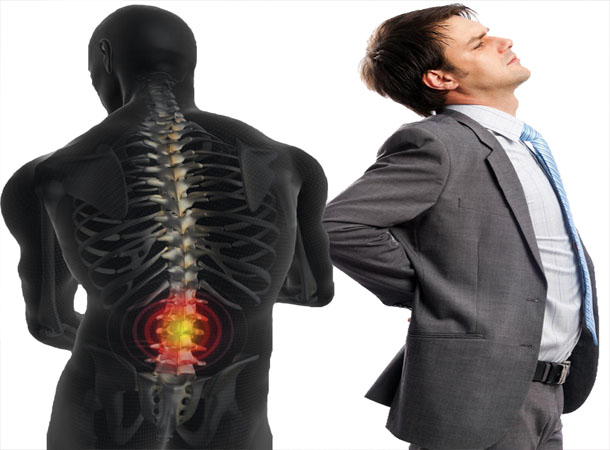1. Exercise
One of the most important things you can do for back pain prevention is to get up and get moving. Why does exercise prevent back pain? Muscles are meant to move, says Robin Lustig, DC, a chiropractor at New Jersey Total Health Center in Lodi and Pompton Plains, N.J. If you aren’t in good shape, you’re more likely to hurt your back and feel pain when you do even simple movements, such as lifting your child from his crib. “Also, exercise helps keep your joints fluid,” Dr. Lustig says. Another reason exercise prevents back pain is that exercise helps you keep your weight down — being overweight, especially around your stomach, can put added strain on your back.
2. Eat right
“If you maintain good eating habits, you not only will maintain a healthy weight, but you also will not put unnecessary stress on your body,” Lustig says. A steady diet of excessively spicy or fast food can strain your nervous system, which is going to create back problems, she adds. Conversely, a healthy diet of fresh fruits and vegetables, lean meats, dairy products, and whole grains will keep your digestive tract on track.
3. Sleep sideways
You don’t want to sleep flat on your back. The best position for sleeping is on your side. If you must sleep on your stomach, put a pillow under your lower abdomen to help take stress off your back. Having a supportive mattress and pillow for your head are vital as well. “Getting enough, restful sleep is always an important part of maintaining good health,” Lustig says. Also, if you exercise during the day, you sleep better at night.
4. Maintain proper posture
“People sitting at their computer for seven or eight hours a day is keeping me in business,” says Lustig. “People slouch over their computers and their telephones when they’re texting, and they don’t realize the damage they’re doing to their backs and the pain they could be causing.” Be sure to work at an ergonomically correct workstation, both at the office and at home, and break up long periods in front of the computer with stretching exercises. If you practice good posture, you will maintain the natural curves of your back and help keep it strong.
5. Reduce stress
You probably don’t realize how much stress can impact your back health. Stress causes you to tense your muscles, and constant tension of this kind can cause back pain. Any activity that helps you reduce stress will help prevent back pain, Lustig says. Stress reduction activities can include yoga, meditation, biofeedback, deep breathing, tai chi, and guided imagery.
6. Quit smoking
It’s well known that smoking raises your risk for heart disease and cancer, including lung and colon cancers, but most people don’t realize that smoking also can be a cause of persistent back pain. Research also shows smoking can make existing back pain worse. It’s not entirely clear how smoking affects back health, but one possibility is that it narrows blood vessels. Narrowed blood vessels result in less oxygen and nutrients reaching the spine and, in turn, it becomes more susceptible to injury and slower to heal.
7. Apply heat or cold
When deciding to apply heat or cold to your back, there is no official medical answer for which one is best. Cold decreases pain and spasms by blocking sodium channels in peripheral nerves. Heat helps relax the muscles and improves blood flow. Therefore, you should do what feels best.
8. Explore alternative therapies
Physical therapy, chiropractic treatment, acupuncture or massage all could be viable options for managing back pain. The key is to find someone who is licensed and well-trained. Better yet, ask for a referral from someone you trust. Traction works for some patients with a herniated disc. Core exercises are the standard regardless of the condition causing low back pain. Massage feels good and releases endorphins, a natural pain reliever.
9. Rest but not completely
If you injure your back, do not take bedrest. Instead, take it easy. Sit or sleep in a comfortable position that reduces spinal pressure. For a herniated disc or muscle strain, the best way to sleep is lying on your back with several pillows below your legs so that your hips and knees are flexed from 80 to 90 degrees. If you have a joint condition, lying on your side with a body pillow between your knees is best.
Sources:
http://www.detroitnews.com/story/sponsor-story/henry-ford-health-system/2015/08/04/lower-back-pain-back-exercises/30937075/
http://www.everydayhealth.com/pain-management/back-pain/quick-tips-to-help-prevent-back-pain.aspx
http://www.ohpkelowna.com














